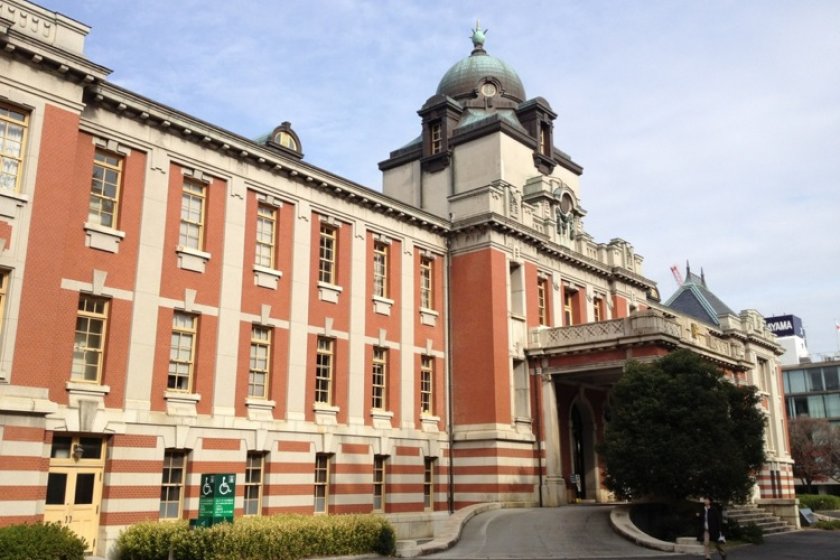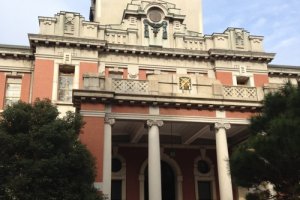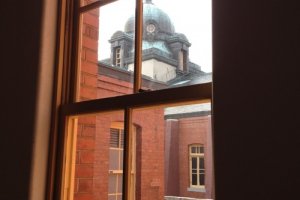Surrounding Nagoya Castle, in the former San No Maru area where high ranking samurai houses once stood, were a great many national, prefectural and city government buildings. Most of the original administrative buildings were destroyed during allied air raids of World War Two, however one of the more elegant buildings to have escaped bombing and the devastating 1945 Mikawa Earthquake was the Nagoya City and District Courthouse.
The main attraction here is the three storey Neo Baroque styled Taisho era building itself. Built in 1922, (Taisho 11) when Japan was still emerging from the shadow of feudalism and western architectural influences were increasingly fashionable, the former courthouse is a large and elegant structure. Constructed of brick and reinforced concrete with white granite exterior, and topped by a wood truss roof.
A wide, grand staircases lead to the upper floors offices and court rooms. Overhead a large Art Deco styled stained glass skylight brightens the splendid main hallway, with it’s arches and pillars decorated with plaster finish marble coating. Below, visitors can see the detention center and cells where prisoners were once confined, including solitary confinement cells and the large community cell remain well preserved. Surprisingly, many of the glass windows remain original too, hence the slight warping effect seen when viewing them up close.
The second floor is now the perusal room, where researchers and the public have access to governmental data, and where restoration, preservation and preparation of documents is carried out. Other points of note are the third floor board room carpet, made in a single weave, and remember to inspect the furnishings including the chandelier , as all are original.
Old photographs show a chrysanthemum crest once adorned the front of the building, but following the war, the Allied Occupation Forces took control of the building for administrative purposes and the crest was removed and has since disappeared. The archive building has been used many times as a location set for TV dramas and movies because of it’s rarity, in fact apart from this particular example, only one other of it’s style and period remain in Japan.
In 1984 the building was classified as a national Important Cultural Property, and as new courthouses had been constructed nearby, the building became the Nagoya City Municipal Archives.
Various non-loan city government related materials are stored in the archives and can be accessed by the public. Permanent exhibitions on city administration and the legislature system can be viewed, and the building regularly hosts other exhibits. Local residents can hire space for exhibitions, and assembly rooms for cultural activities.
Admission is free, and visitors are few. A small café serves light lunches and beverages. The atmosphere is elegant and the Nagoya City Municipal Archives is worth taking a look at for a fine example of the architecture that reflects but a moment in Japan’s long history.



































